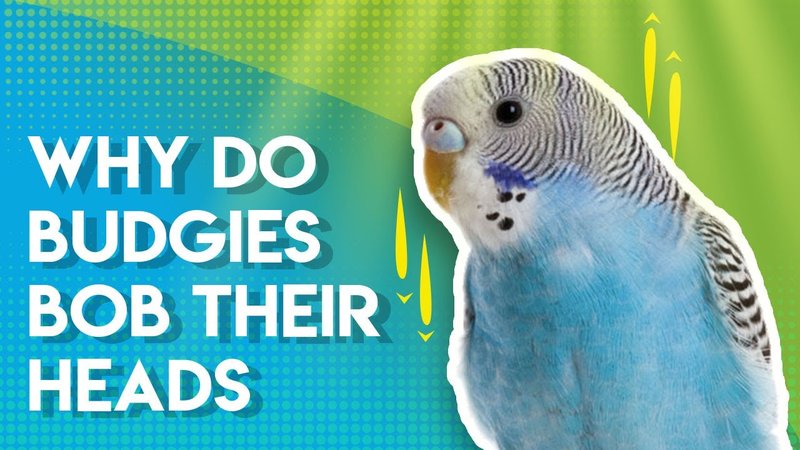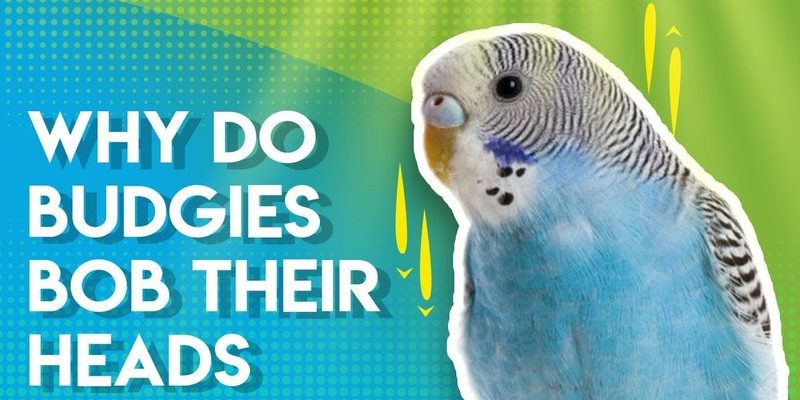
Think of budgies as the social butterflies of the pet bird world. They’re not just pretty faces; they’re communicators. Their behaviors can tell you how they’re feeling, what they want, and even how they interact with their environment. Whether you’ve just brought a budgie home or you’ve had one for years, diving into their behavior can deepen your bond and help you provide the best care possible.
Let’s explore some fascinating aspects of budgie behavior, including why they chirp, the meaning behind their head bobbing, and how you can interpret their other playful quirks.
Why Do Budgies Chirp?
Chirping is a fundamental part of budgie life. You might hear a series of melodic whistles or rapid clicks throughout the day, and that’s perfectly normal. To a budgie, chirping is like texting a friend—it’s all about communication. They chirp to express various emotions, from joy to boredom.
You might notice that a happy budgie chirps more frequently, especially when they’re playing or interacting with you. If they’re feeling a bit anxious or scared, their chirping could become less frequent or even stop altogether. Here’s the thing: pay attention to the tone and rhythm of their chirps. A loud, excited chirp could mean they’re feeling playful, while a softer chirp might indicate they want some alone time.
Another reason budgies chirp is to establish their territory. If you have multiple budgies, you may notice them calling out to each other or responding to one another’s sounds. This is their way of keeping tabs on their buddies and ensuring that everything’s in order. It’s like a neighborhood watch but with feathers!
The Meaning Behind Head Bobbing
Head bobbing is one of the most entertaining and recognizable behaviors in budgies. You might catch your feathered friend bopping their head up and down, looking like they’re trying to get the attention of a potential mate—or maybe they’re just grooving to their favorite tune! But why do they do this?
Budgies often bob their heads as a form of communication. It’s particularly common during courtship displays, where the head bobbing signals interest and excitement. If you have a pair of budgies, watching this behavior can be quite the treat! However, head bobbing isn’t limited to romantic pursuits. It can also be a way for a budgie to express their happiness or to engage with you.
Here’s a fun observation: if your budgie starts to bob their head while you’re talking to them, they might be responding to your voice and showing their enthusiasm. It’s their way of saying, “Hey, I’m listening!” So, if you want to encourage this behavior, spend some time chatting with your budgie and watch that little head bounce!
Understanding Other Fascinating Behaviors
Beyond chirping and head bobbing, budgies have a variety of other behaviors that can be intriguing to watch. For instance, you may notice your budgie preening their feathers meticulously. This behavior is crucial for their well-being. Preening helps keep their feathers clean and aligned, ensuring they can fly and stay warm. Think of it as their version of a daily grooming routine!
You might also witness your budgie flapping their wings or doing little jumps around their cage. This can be a sign of excitement or simply a way to burn off some energy. Budgies are natural fliers, so they need to stretch those wings, even if it’s just a little hop. Plus, engaging in these playful activities shows they’re comfortable in their environment and feel safe.
Another interesting behavior to note is when a budgie becomes quiet and still. This might seem concerning at first, but sometimes, it simply means they’re resting or observing their surroundings. Budgies can be quite curious, so they may pause for a moment to soak in everything happening around them. Just like you might take a coffee break to gather your thoughts, budgies need those quiet moments too!
How to Interpret Your Budgie’s Body Language
Understanding your budgie’s body language is key to interpreting their emotions. For example, if your budgie is puffing up their feathers, it might mean they’re feeling relaxed and content. This behavior can often be seen when they’re perched comfortably or after a nice meal. On the flip side, if you notice them crouching low with their feathers fluffed, it could indicate that they feel threatened or scared.
Another body language cue to watch for is tail movement. A bobbing tail can signify excitement or a friendly greeting to you or another budgie. Conversely, a stiff tail might suggest that your budgie is feeling agitated or uneasy. If you catch your budgie pacing back and forth, they might be expressing frustration or curiosity about something in their environment.
By observing these cues, you can better respond to your budgie’s needs, whether it’s providing comfort during stressful times or engaging in play when they’re feeling energetic. Connecting with your budgie through their body language is a rewarding way to strengthen your bond.
Social Interactions: Budgies and Their Companions
Budgies are incredibly social creatures and thrive on interaction. They often enjoy the company of other budgies, and you might find that having more than one can lead to playful antics and bonding moments. If you notice your budgies grooming each other or sharing space, this is a clear sign of friendship. It’s like a buddy system among feathered friends!
When introduced to other pets or humans, budgies can show varying levels of acceptance. Some might be curious, while others may react with caution. If you have other pets, it’s essential to supervise interactions, as not all animals mix well. Creating a safe environment helps your budgie feel secure and encourages them to socialize more comfortably.
You might also observe that your budgie becomes attached to you as their primary caregiver. They often enjoy your presence, following you around, or attempting to interact through chirps. Building this connection can be incredibly rewarding, and it’s a lovely way to see how your budgie responds to your voice and actions.
Creating a Happy and Stimulating Environment
To support your budgie’s well-being and happiness, it’s essential to create an engaging and safe environment. Start with a spacious cage that allows for movement, climbing, and exploration. Budgies love to fly, so if possible, create a safe space where they can get some flight time outside their cage. Just like a kid in a playground, they’ll thrive with the freedom to explore!
Adding toys, perches, and climbing structures can also significantly enhance their environment. Budgies are natural explorers, so providing various textures and challenges keeps their curious minds engaged. Rotate toys regularly to keep things fresh—think of it as giving them new games to play!
Don’t forget about nutrition, too. A well-balanced diet contributes to your budgie’s overall health and happiness. Fresh fruits, vegetables, and quality seed mixes should be staples in their diet. A happy budgie is often a well-fed budgie, and a little variety goes a long way!
Final Thoughts on Budgie Behavior
Understanding budgie behavior doesn’t just help you provide better care; it enhances your relationship with these delightful birds. From their colorful chirps to their quirky antics and social dynamics, getting to know your budgie’s personality can be as rewarding as having a furry friend.
By paying attention to their sounds, movements, and interactions, you can create a nurturing environment that caters to their needs. Remember, each budgie is unique, and observing their individual quirks will help you appreciate their personality even more. So whether they’re singing a happy tune or engaging in play, embrace the journey of understanding your feathered companion. Happy observing!

